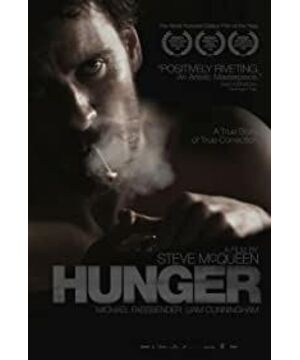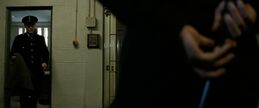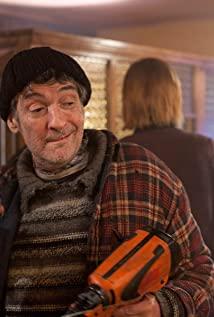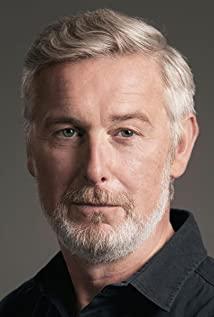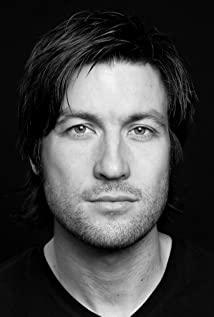In terms of the choice of shooting style, the director is very successful. The style of "Hunger" is simple and cold, Michael Haneke's cold violence, Gus Van Sant's minimalism in the later period, and this is related to the location of the story - the prison , the theme - Rebellion complements each other. In terms of content, director Steve McQueen chose a silhouette in the complicated relationship between the IRA and the British government, a theme of resistance, a scene that took place in what Foucault called the place of discipline and punishment. The story of a prison, a hunger striker and an inevitable end to death. When the prison guard cautiously drove from home to the prison in the film, he had transitioned from a secular and peaceful life in the UK to a violent arena where dissidents were suppressed, and the two people fighting in the arena were directly replaced in the prison with a variety of the binary opposition model. Republicans and guards, oppressed and oppressed, naked and well-dressed, dirty and clean, silent and talkative. These many confrontations seem to be a violent fight, making the film exude a fishy smell of mixed blood and semen.
In the film, the members of the Republican Army represented by Bobby Sands are silent, and they basically have no communication whether it is interrogation or daily life. Here, silence becomes a tool of resistance, a standard of behavior that defines itself. Like the arrogant swan arrogantly ignoring the chirping and parroting of the sparrow, the presence of the members of the Republican Army is always very quiet and holy. In contrast, the collective appearance of the prison guards was raucous, with whispers, unbridled shouting, and unbridled laughter, interspersed with parental gossip and innocuous jokes. In the film, it is not just the members of the Republican Army who are silent. The prison guard Raymond Lohan is a very interesting character. He contributed a lot to the silence of the blockbuster at the beginning of the film. Compared with the open and explosive revolutionary struggles of Bobby Sands, his struggles were more hidden and introspective. As a Northern Irishman, it is impossible for him not to be sympathetic to the independence struggle of Northern Ireland, but the police's Identity bound him like a yoke, sealing his mouth, and he could not express his views publicly. This makes him can only silently endure the incomprehension of his relatives (the mother's neglect of him) and the fearful life (lying on the ground to check the bottom of the car, fearing retaliation), therefore, compared with the magnanimity of Bobby Sands, he appears extremely tragedy.
After the ribs of God stole the forbidden fruit and knew their shame and covered their bodies, clothing gradually developed into a life ethic. It is this kind of asceticism and abstinence in life to fight against the ethic of life that is marked with pleasure, abundance and pleasure. Unlike the true cynicism of Diogenes, the Bobby Sands didn't intend to live their whole life in the back streets like a cynical dog, as the details in the film show, although the revolutionaries were extremely in prison. Barely resists getting dressed, but when family visits, they always get dressed voluntarily. All they need is this form of revolt, this revolt against the life that British society advocates.
The "Starry Sky" painted with excrement in the film is indeed impressive. If you measure it by the Van Gogh-style Post-Impressionist standards such as the application of bright yellow paint, the point-like brushstrokes, and the release of inner passions, this is really impressive. Really can be called a masterpiece. Of course, this is a joke, but here, politics and art, aesthetics and action are married, and as Hannah Arendt said, "the right love for beauty, the right communication with beautiful things, the connection with politics Together, taste belongs to political ability." This artistic aesthetic sensitivity and political correctness are just two sides of the same coin. Unlike using a classical sense of sublime and great to unleash political, revolutionary, and artistic passions, this is disgusting, and of course, the postmodern artist Gerry can't be moral. Lacroix, you also cannot equate his "work" with Liberty Leading the People. Dirty and uncleanness are a form of defiance as well as being unclothed. Long hair and long beard, slovenly, hate bathing, wanton excretion. These behaviors have become certain beliefs and symbols. They are the lifelong prayers and prayers of Christians who do not marry, eat fasting, and recite Buddhahood. There are two more violent protests in the film, both of which are related to the desecration of this belief by the prison guards. One was the forced bathing, haircut and shaving of Bobby Sands, and the other was the furious destruction of the cell by prisoners when they saw that the filthy cell had been cleaned by the guards. These two images are extremely violent, perhaps, the level of mental blood castration is more severe than the physical damage of the beatings and abuse of prisoners by prison guards.
As a form of resistance, hunger strikes continue to be staged on both the religious stage in the Middle Ages and in today’s political theaters. The earliest act of suppressing the most basic human desires originated from the most extreme repentance of the original sin of gluttony in the Catholic tradition. When the devout believers of these now-smiling ascetic sects whipped themselves, castrated themselves, and even starved to death, they murdered their bodies and minds in an unreal world of bliss. Of course, today's political resistance will not be contaminated with these "rotten" religious dust. Therefore, these extreme resistance are now only means, not ends. After a few days of hunger strike, they will resume eating immediately. As long as the will to rebel is spread, the hunger strikers The words have appeared in the media, OK, everything is OK, No one knows about the champagne popping in the future. But Bobby Sands's hunger strike was quite different. His behavior was not just a brash, but it was exactly the same as the religious self-abuse of the ascetic. He was determined to sacrifice himself, but the burning altar Not the flame of religion, but the flame of revolution and freedom. In fact, compared to the death record of Bobby Sands' hunger strike in the second half of the film, the dialogue with the priest is the focus of the whole play. In this 17-minute long-camera dialogue between the two, Bobby • Sands offered to go on a hunger strike in response to the British government's unfair treatment of the Northern IRA political prisoners, while the chaplain argued that there should be a protracted and protracted struggle. Here, two strategies of struggle emerge, violent, momentary, shocking and mild, long-term and prosaic. Bobby Sands has defended his extreme tactics, claiming that the hunger strikes of the past had not served their purpose, only a new way of gaining international attention by putting pressure on the British government to achieve Effect. And pastors believe that the overall benefits of long-term struggle outweigh short-term drastic actions. Two different revolutionary beliefs bring people a dilemma. Just being a posthumous memorial sculpture and a celebrity's former residence seems to have no substantial contribution to the revolutionary cause. Whether aphrodisiacs can balance the loss of a fighter on the other end of the scale in the revolutionary ranks is still unknown. Meanwhile at the other pole, will the prolonged struggle of mild and unmarked violence foster its own inertia, gradually disintegrating the revolutionary passion within, while spoiling the enemy, making them think we are all powerless cowards, thus making the revolution No one knows about the dream of becoming a distant yellow beam. Marx also said: Violence is the midwife of revolution. Everything, how to measure, is it willing to be Bruno at the stake, or Galileo in prison, this Sphinx mystery seems no one can answer.
Finally, I want to talk about Northern Irish cinema, whether it's Trimm's In the Name of the Father, Neil Jordan's The Crying Game, Ken Loach's The Wind and the Wind, or Paul Greenglass "Bloody Sunday" and of course, "The Hunger", will not give you a relatively happy viewing experience. The advent of these films is not for fear of provoking contradictions in the world. The situation in Northern Ireland has stabilized today. , we can indeed tell this history calmly. History should not be forgotten. Of course, this is not an old-fashioned slogan and picking up wisdom. As the Guardian commented: "The Hunger" is a raw and powerful film. The film works, always reminding the world that there is such an ugly and tragic past in British and Irish history.
View more about Hunger reviews


